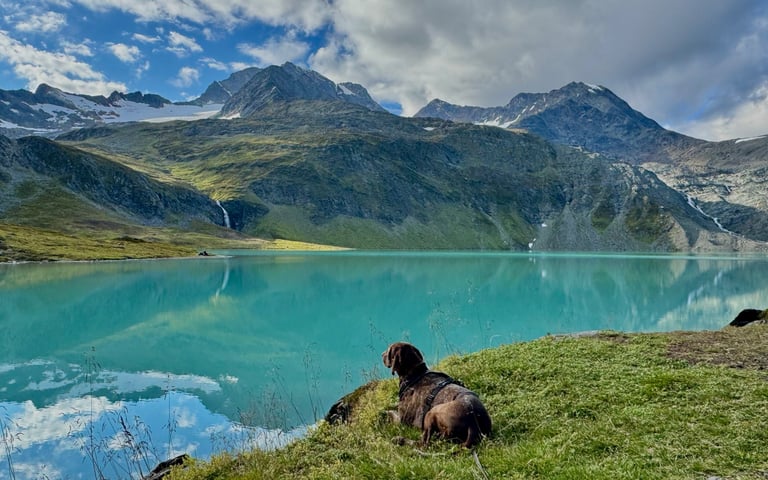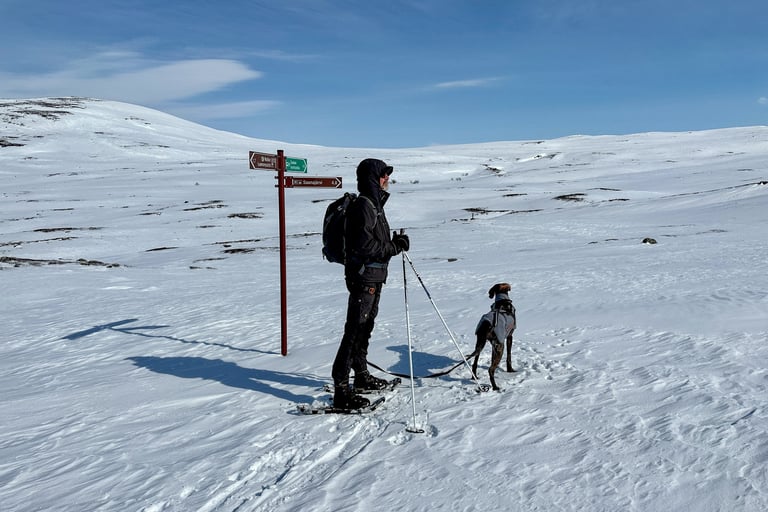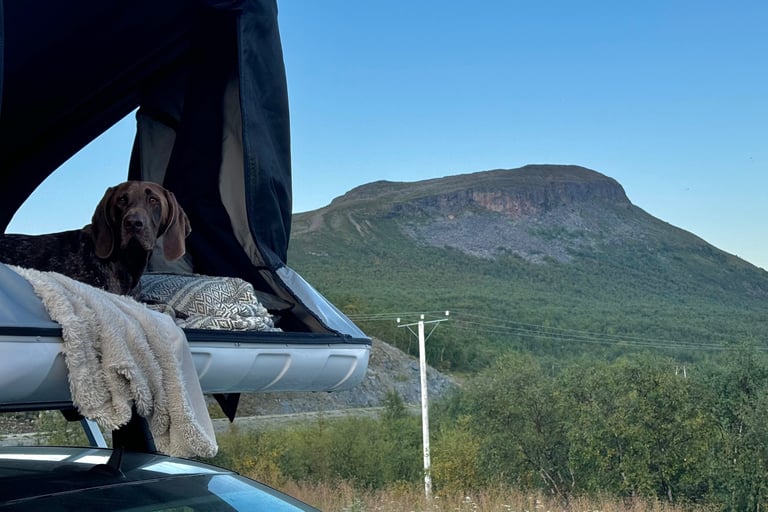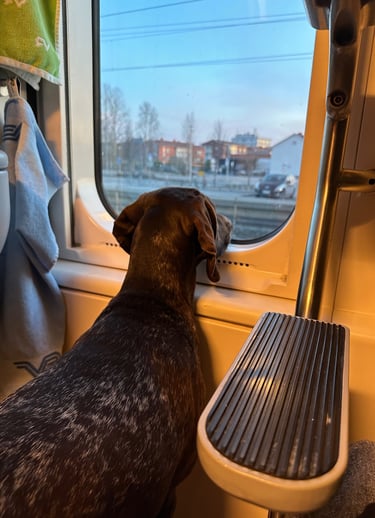Traveling with our dog
Traveling, hiking and camping with a large dog is doable but requires its own routines.
DOGSTRAVEL
Alex
11/13/20253 min read






Traveling with our dog
Naava, our German Shorthaired Pointer, or GSP for short, weighs about 30kg, is all muscle and will easily run 30-40km on a morning hunt looking for birds. She has the energy of a small village and needs a lot of activities to keep her even reasonably calm.
So, how do you plop this girl in a car, camper van, train or boat and expect her to sit still for a whole day? Well, training. We started taking her for rides as soon as we got her at the tender age of 6 weeks. First just minutes, to the store or around the block, then increasingly longer trips. We also had a lot of luck as it turned out that our girl didn't get carsick and actually settled down really well in the backseat on a large number of fluffy blankets. Now, at the age of 3, she will happily do 10-12 hour days in the car, with appropriate breaks every three hours or so. Also, when arriving at our destination, she will expect a long good walk, no matter what the circumstances.
Apart from the mandatory breaks to let her stretch her legs and do her business, there are a few other considerations and I can imagine these will not be the same for all dogs.
First, her food. As we can spend up to a month on the road, keeping large amounts of fresh food, not to mention frozen food, is not possible. So, we bring large sacks of dry food with some treats that don't require refrigeration. A very important thing that is easily overlooked on longer hauls is water. Especially in the summer we carry water bottles for her and have taught her to drink straight from a bottle or a garden hose when available. On hikes in Finland water is very seldom a problem with hundreds of thousands of lakes and connecting rivers and streams.
Trains, ships and other mass transport can be much more challenging and always require a lot of planning. Taking a break on a train that doesn't stop is a bit hard so we take trains that do, and do quick runs outside when possible.
Ships are harder but some have special decks with small areas made for dogs to stretch and do their business. This doesn't always work. Naava, for instance, will hold it in on a ship even for longer periods and only do her thing when we get ashore. The trick then is not to overfeed her or give her large amounts to drink just before the trip.
Our rooftop tent on our car turned out to be an absolute favourite of hers. She jumps up against the car in the evenings, asking me to lift her up and loves to lay up there watching everything in the mornings. As she doesn't know how to climb down a ladder backwards, she quickly learned to climb on my shoulder when she wants to get down, although she's a bit heavy for Miia to do this.


Living in Finland of course means that it gets cold even in the summer and very cold in the winter, so Naava needs her own set of garments to keep her warm. Paws also need protection on rocky fells and in the snow, especially in the spring when the crust tends to be icy (sharp).
There is one challenge that we still have with her, especially in the winter on skis or any time when it's slippery (most of the time between December and April). She has a tendency to pull on her leash when she smells or sees something interesting - which is often - and this can be a real pain when we are on steep slopes or even just in crowded cities. Needless to say, a bird dog will definitely go after pigeons and even sparrows if they come too close. Finally, because with Naava things happen, we always carry a dedicated first aid bag just for her. It has not gone unused.
